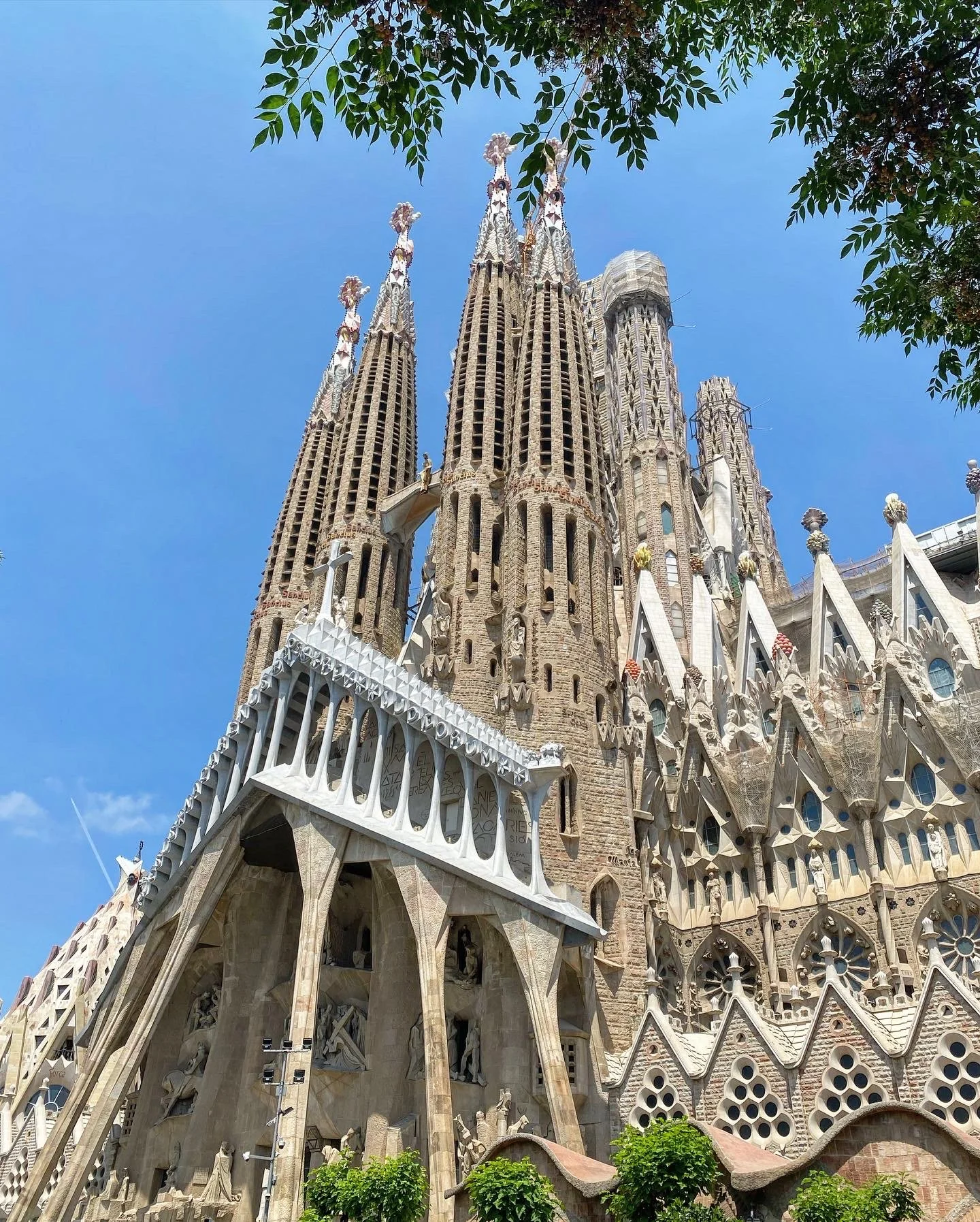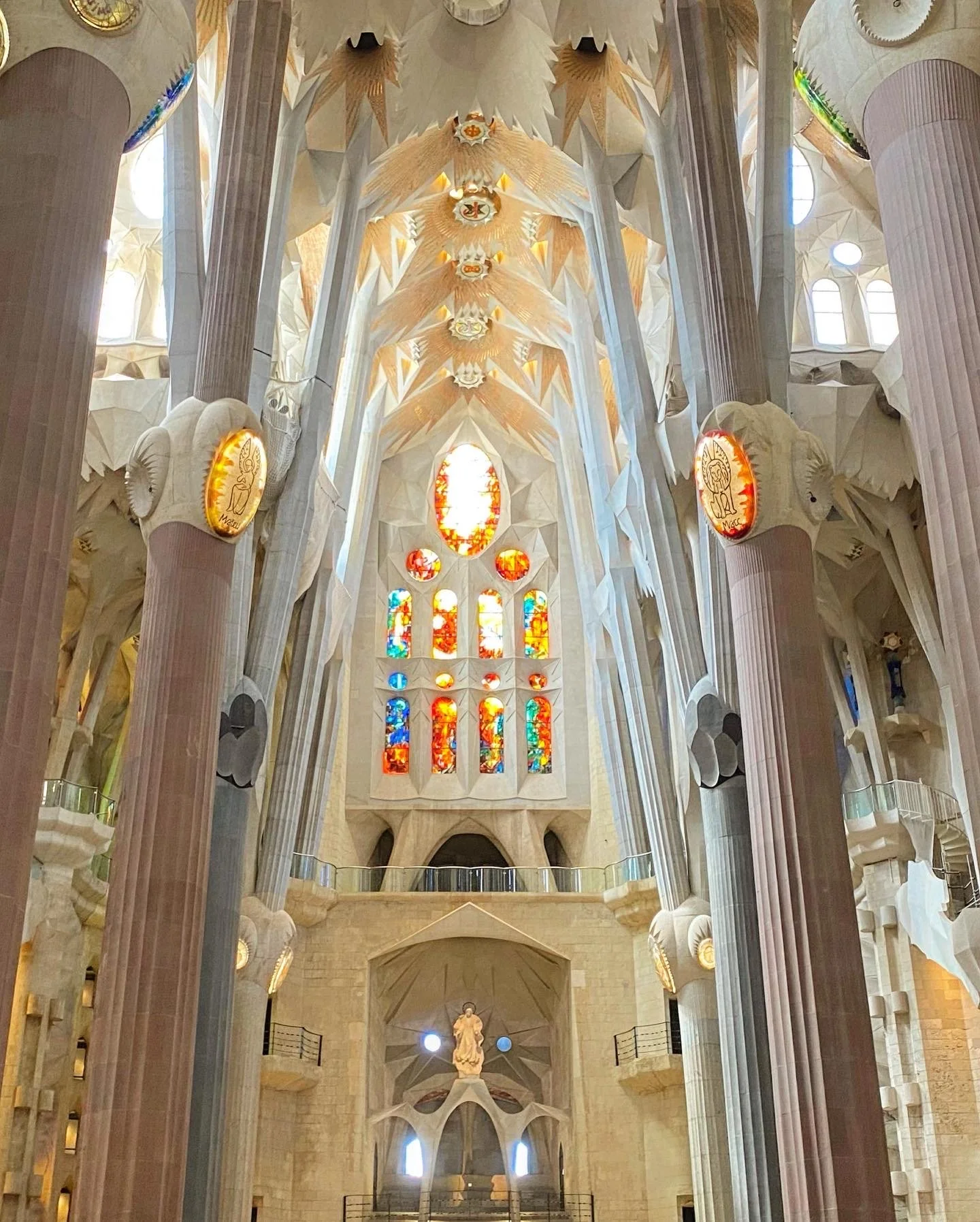Barcelona is an Architect’s Fever Dream
A CITY OF STUNNING ARCHITECTURE AND FUNCTIONAL ART
This was my second time in Barcelona and I felt as blown away with it this time as I did the first. The city is unique for much of Europe because it houses millions of people (on the scale of Paris, Madrid, and Milan) and the majority of the city is planned in a grid system - the result of a 19th century design competition when expansion outside of the gothic quarters was allowed. The combination can feel like an American metropolis - but one dripping with the brilliance of the world’s best modernist architects and European culture. My overarching sentiment both times I visited was “I would live here.”
EXPLORE THE MODERNIST ARCHITECTURE
Barcelona is world-known for its modernist architecture - and particularly the works of Antoni Gaudi. His work and that of his peers blended art and functionality - which is easy to see in the mosaic benches and metal work lamps on the city’s main roads. The Sagrada Familia is the crown jewel of architecture in Barcelona and is one of the most beautiful cathedrals in the world. Entry is expensive - but worth it. The church interior is incredibly moving - and unlike anything you’ve seen before. The other site, also a bit expensive, that I think is very worth it is to spend a few hours walking around Park Guell. It was originally conceptualized as a private living community - but construction became too expensive to attract inhabitants. Eventually, it was acquired by the city and made into a park. (The expense of modernist architecture was a large part of why it didn’t persist).
If your budget can swing it, I highly recommend an architecture walking tour. Barcelona is fascinating not only in architecture but in city planning - which originally gave a focus to air flow and park spaces.
WANDER THROUGH THE GOTHIC QUARTERS AND GRACIA
Most of Barcelona is fairly new for a European city (19th century). Barcelona does have two historical districts, though - the Gothic Quarter and Gracia. The Gothic Quarter is full of the narrow, weaving roads and baroque architecture you might expect of old Europe; this district does feel very tourist-centric, though, and the shops can be a bit banal. Gracia feels a more like a grid full of European plaza spaces; Gracia is full of delicious restaurants and local shops. It’s charming and romantic, and it’s where I spent most of my nights in Barcelona.
OTHER THINGS TO DO
As one of Europe’s largest cities, there’s certainly no shortage of things to do in Barcelona. Here are some of the most common:
Go to the Beach. Barcelona’s urban beaches are accessible and will-fit-out with public accessories like chairs and gym equipment.
Visit the other Modernist Buildings. Gaudi and his contemporaries’ works are scattered throughout the city. You can visit the Sant Pau Art Nouveau site, Palau de la Musica Catalana, Casa Vicens, Casa Mila, or Casa Battlo.
Shop at the Boqueria. Barcelona’s oldest food market is still prominently located in the Gothic Quarter.
Go inside Santa Maria Del Mar. This is Barcelona’s other major cathedral.
Walk through Parc de la Ciutadella. Located near the beach, this expansive park if full of beautiful common spaces, a huge fountain, and a zoo.
Shop on La Rambla. This is Barcelona’s Main Street and stretches between the Gothic Quarter and Gracia. It boasts modern shopping and cute places to eat.
Go to the Picasso Museum. This collection has over 4,000 works by Picasso.
If you just wander around Barcelona with an open mind, you’ll find no shortage of things to catch your eyes and feed your soul.





